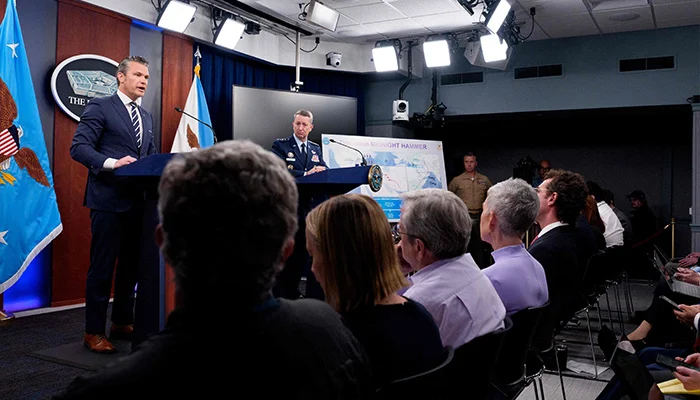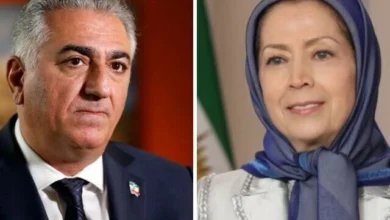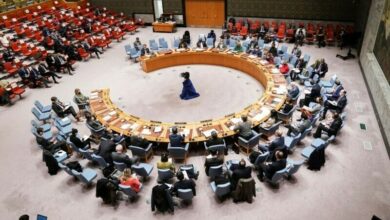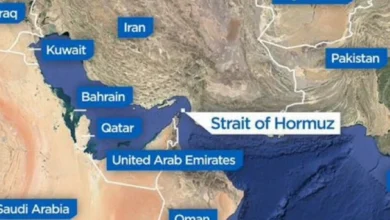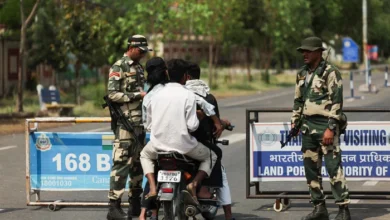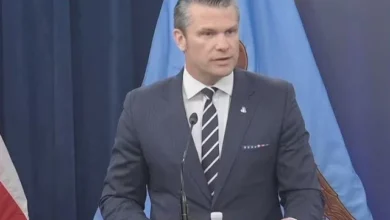A series of unprecedented US strikes against Iran “devastated” its nuclear programme, Defence Secretary Pete Hegseth said Sunday, as he asserted Washington was not seeking regime change in Tehran.
The Pentagon chief urged Iran’s leaders to find an off-ramp to the conflict after President Donald Trump announced the strikes on a key underground uranium enrichment site at Fordo, along with nuclear facilities in Isfahan and Natanz.
“We devastated the Iranian nuclear programme,” Hegseth told a Pentagon press briefing, adding that the operation “did not target Iranian troops or the Iranian people”.
Trump “seeks peace, and Iran should take that path”, Hegseth continued. “This mission was not, and has not, been about regime change,” he added.
Trump’s intervention — despite his past pledges to avoid another “forever war” — threatens to dramatically widen the conflict after Israel launched an unprecedented bombing campaign against Iran last week, with Tehran vowing to retaliate if Washington joined in.
Earlier, the US president said Washington would hit more targets if Tehran did not capitulate. Hours later, Iran launched two waves of attacks against its long-time foe Israel.
“Iran the bully of the Middle East must now make peace,” Trump said, warning future attacks would be “far greater” unless a diplomatic solution was reached.
“Remember, there are many targets left,” he added.
Iranian Foreign Minister Abbas Araghchi accused the United States of sabotaging diplomacy after talks with European powers.
“This week, we held talks with the E3/EU when the US decided to blow up that diplomacy,” he wrote on X.
Araghchi later told reporters in Istanbul the United States and Israel had “crossed a very big red line”, asserting Iran would continue to defend itself “by all means necessary”.
Iranian President Masoud Pezeshkian condemned the US strikes, saying the attack revealed Washington was the “main factor behind” Israel’s military campaign.
Israeli Prime Minister Benjamin Netanyahu hailed the US strikes, saying Trump’s decision to “target Iran’s nuclear facilities with the awesome and righteous might of the United States will change history”.
The Israeli military said it was checking the results of the US raid on the deeply buried nuclear facility in Fordo, with a spokesman saying it was “too soon” to know if Iran had removed enriched uranium from the key site or if it had been buried in the attack.
US Vice President JD Vance maintained his country was “not at war with Iran, we’re at war with Iran’s nuclear program”.
He added the strikes had “substantially delayed” the development of a nuclear weapon — something Iran has long denied pursuing.
‘Largest B-2 operational strike’
The United States has carried out strikes that caused “extremely severe damage and destruction” to three of Iran’s nuclear facilities, Joint Chiefs Chairman General Dan Caine said on Sunday
Gen Caine described the operation “Midnight Hammer” as the “largest B-2 operational strike in US history and the second-longest B-2 mission ever flown.”
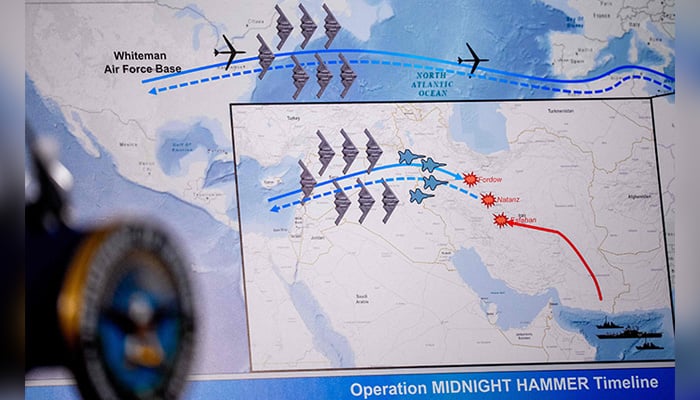
Caine told journalists the strikes involved more than 125 US aircraft including B-2 Spirit stealth bombers, fighters, aerial refueling tankers, a guided missile submarine and intelligence, surveillance and reconnaissance aircraft.
He said the “main strike package comprised of 7 B-2 Spirit bombers” flying 18 hours from the US mainland to Iran with multiple aerial refuelings.
“This mission demonstrates the unmatched reach, coordination and capability of the United States military,” the general said. “No other military in the world could have done this.”
Caine said the B-2s dropped 14 bombs known as the GBU-57 or Massive Ordinance Penetrator — a powerful 30,000-pound (13,600-kilogram) bunker-busting weapon that made its combat debut in the Iran operation.
The bombs — which are designed to penetrate up to 200 feet (60 meters) underground before exploding — were needed to hit deeply buried Iranian nuclear facilities.
Testing of the weapons began in 2004 and Boeing was in 2009 awarded a contract to complete the integration of GBU-57 with aircraft.
In addition to the bombers, a US guided missile submarine in the Middle East launched more than two dozen missiles at unspecified “surface infrastructure targets” at Isfahan, one of three nuclear sites struck in the operation, Caine said.
The missiles are “designed to fly at extremely low altitudes at high subsonic speeds, and are piloted over an evasive route by several mission tailored guidance systems” and were first used in 1991 against Iraqi forces during Operation Desert Storm, according to the US military.
The head of Iran’s Red Crescent Society, Pir Hossein Kolivand, said there were no fatalities in the US strikes on the nuclear facilities, according to Iranian state television.
In response to the US attack, Iran’s armed forces said they targeted multiple sites in Israel including Ben Gurion airport, the country’s main international gateway near Tel Aviv.
Israeli rescuers said at least 23 people were wounded. Police said at least three impacts were reported.
Israel said it had launched fresh strikes on western Iran and in Qom, south of Tehran. Iran’s official IRNA news agency reported four Revolutionary Guard members were killed in strikes on a military base in the city’s north.
The Israeli military said it had “struck missile launchers ready to launch toward Israeli territory, soldiers in the Iranian Armed Forces, and swiftly neutralised the launchers that launched missiles toward Israeli territory a short while ago”.
Iran’s Shargh newspaper reported that a “massive explosion was heard” Sunday in Bushehr province, home to Iran’s only nuclear power plant.
Iranian news agencies also reported strikes in Yazd province.
The UN’s International Atomic Energy Agency said it had not detected any increase in radiation levels at key nuclear sites in Iran following the strikes and Tehran said Sunday there were “no signs of contamination”.
Saudi Arabia said no radioactive effects were detected in the Gulf and voiced “great concern” over the US strikes.
The United Arab Emirates, Qatar and Oman, which had been mediating Iran-US nuclear talks, criticised the US move and urged de-escalation.
The European Union called on all sides “to step back”, while stressing Iran must not be allowed to develop nuclear weapons.
UK Prime Minister Keir Starmer called on Iran to “return to the negotiating table” over its nuclear ambitions.
The Iranian foreign minister said he would travel to Moscow for “serious consultations” with Russian President Vladimir Putin on Monday.
Following his address, Trump warned Iran against “any retaliation”. Iran and its proxies have previously attacked US military bases in Iraq and elsewhere in the region.
Iran’s Houthi allies in Yemen on Sunday repeated their threat to resume attacks in the Red Sea if Washington joined the war, saying they were “ready to target US ships and warships”.
The US president had stepped up his rhetoric against Iran since Israel first struck Iran on June 13, repeating his insistence it could never have nuclear weapons.
Tehran denies seeking an atomic bomb. On Saturday, President Masoud Pezeshkian said Iran’s right to pursue a civilian nuclear programme “cannot be taken away… by threats or war”.

